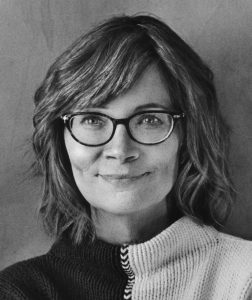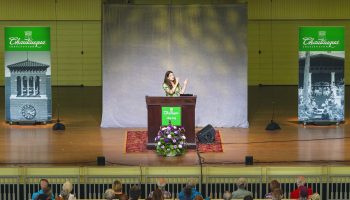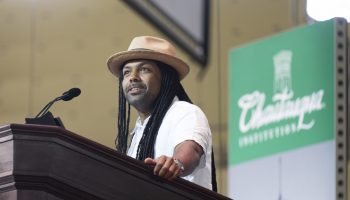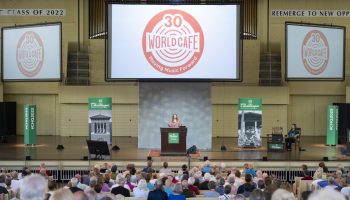In 2017, the top-grossing documentaries were Disney’s “Born in China” and Raoul Peck’s “I Am Not Your Negro,” earning more than $13 million and $7 million in the United States, respectively, according to The Numbers.
But those numbers have already been surpassed in 2018. The documentary “Won’t You Be My Neighbor” has grossed more than $22 million, and “RBG” is the second-highest documentary, having earned more than $13 million at the box office, according to The Numbers. While the dollar amounts for the 2017 year have been finalized, these box office numbers for 2018 come before the second-run push most movies make during Oscar season.

“Won’t You Be My Neighbor” and “RBG” have been some of the most-talked about movies of the year, and Chautauqua’s Week Nine theme, “Documentary Film as Facilitator: Storytelling, Influence and Civil Discourse” has come at a ripe time, said Ann Hornaday, film critic for The Washington Post.
“The timing could not be more perfect to be talking about documentaries at Chautauqua this summer,” Hornaday said.
During her lecture at 10:45 a.m. Wed., Aug. 22, in the Amphitheater, Hornaday will speak about documentary filmmaking and how it has evolved to its current form and how people should watch the genre.
“By that time in the week, people will have heard from Ken Burns,” Hornaday said. “They will have had full-body immersion into documentaries, and especially Ken Burns’ approach to documentary filmmaking. So what I would like to do on Wednesday is kind of pull the lens back a little bit.”
In 2009, Hornaday embarked on a journey to explore what makes a movie good or bad through the eyes of the audience. The Washington Post series was titled “How to Watch a Movie,” thus giving her a launching pad for her 2017 book, Talking Pictures: How to Watch Movies.
In the how-to guide, Hornaday breaks down a movie production into seven subsets: screenplay, acting, production design, cinematography, editing, sound and music, and directing. In each chapter, she poses questions viewers should be asking and provides insight into the filmmaking process. Hornaday draws on the copious interviews she has done with industry leaders in her career spanning four decades.
One chapter of the appendix focuses on documentaries and fact-based dramas, such as biographical pictures. In her lecture, Hornaday hopes to explore that area more.
When it comes to documentaries and biographical pictures, Hornaday said people should be wary of taking the content at face value.
“Everything is mediated,” Hornaday said. “The filmmaker is choosing what to film; the filmmaker is choosing what to leave out; the filmmaker might be scrambling chronology in a way that we might not be aware of.”
There are certain components Hornaday is looking for when she watches documentaries, and one of them is transparency.
Sarah Polley’s “Stories We Tell” is a good example of being transparent, Hornaday said. In the autobiographical documentary, Polley uses footage that appears to be archival and home videos. She later reveals those scenes were staged.
“She let (viewers) fall under the spell of the movie, then she very gracefully and kind of gently eases out of that at the end,” Hornaday said. “She kind of shows her hand, like, ‘Here’s what I did.’ I just think it’s such an elegant way to do that transparency I was talking about, and not at all compromise the emotional power of the movie.”
The inception of director’s commentary on DVDs and Wikipedia pages with innumerable facts has given way to a more active audience, Hornaday said. When viewers watch a documentary or a biopic, they can research the real-life events the film is based on.
Though audiences are engaging with the material more, Hornaday believes people need to think more critically and question what they’re watching on screen.
“When (filmmakers) fudge facts, if they’re doing so for whatever reason — to make a smoother narrative or a more dramatic narrative — I would like to see a little more transparency on their end,” Hornaday said. “But I do think it’s ultimately incumbent on the viewer to just be skeptical and just remember, even in the case of a documentary, and surely in the case of a biopic, that this is not the ‘truth.’ This is storytelling; this is somebody’s point-of-view on events. We can value it, and we can derive meaning from it, but that’s different than taking it as the ungarnished truth.”





